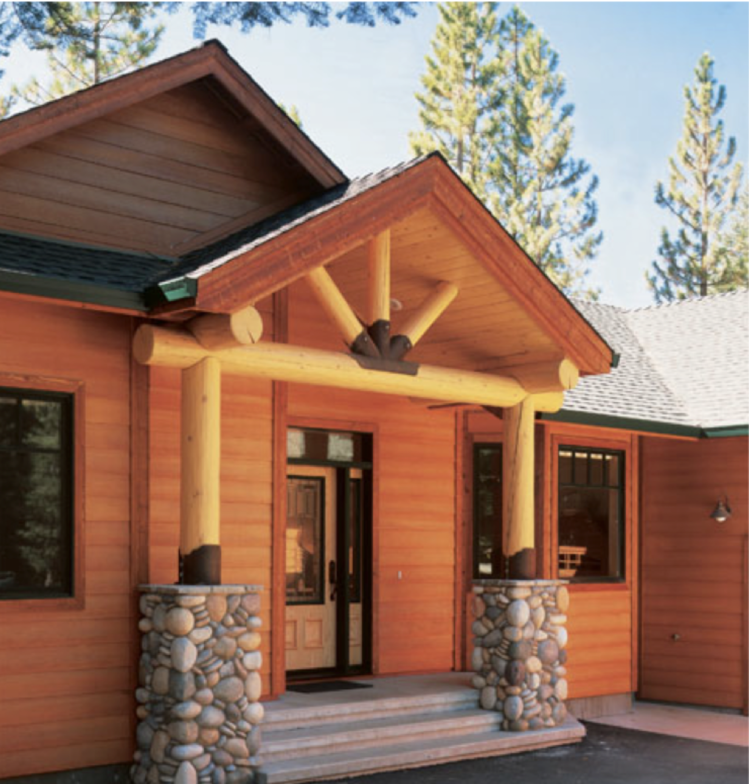
Restoring vintage wood siding is a common task that contractors are very familiar with — simply because wood siding requires a lot of attention to keep it in pristine shape. Some wood restoration projects are simple and straightforward, while others require more intensive repair. At a certain point, it becomes more practical to replace old wood siding with new, modern materials like fiber cement that requires much less maintenance.
This article outlines how to identify common wood siding deterioration, choose the appropriate restoration technique, and gauge when a replacement is needed. Whether you’re just getting started or you’re considering swapping vintage wood siding for something more durable, this guide can be a great resource.

Common Issues with Vintage Wood Siding
Wood siding can bring beautiful character to a home — but at a cost. Wood is perhaps the most difficult siding to maintain, simply because it is a natural material that is susceptible to a lot of damage. Wind, moisture, insects, sun, heat, and other everyday factors can take a toll on wood and leave it worse for wear.
Learning to identify damage on your wood siding is key to long term success in keeping it in good shape. Correctly identifying the cause of the deterioration will help you choose the proper restoration technique.
Splotchy or chalky color is typically a sign of sun damage. The color of vintage wood siding is prone to fade over time. Most exteriors have different levels of sun exposure, so fading is rarely consistent, meaning it's all the more noticeable. Flaking and chipping is also common on wood siding, which could be due to sun damage or rotting — or a combination of both.

Rotten panels are a common occurrence with natural wood siding. The frustrating part about it is that you don’t have to live in a floodplain to experience significant moisture damage on a wood exterior. Humidity, heavy snowfalls, and regular rain accumulation can all contribute to moisture damage, which typically shows up as rotten panels.
Green or black splotches can be a sign of mold and mildew growth, which is another result of too much moisture building up on wood siding. Damp conditions provide the perfect setting for mold and mildew to spawn, and because wood has a tendency to absorb moisture, mold and mildew stains are to be expected.
Over time, warped, buckling, or sagging wood panels can also appear. This is usually a result of temperature swings. Hot summers can cause wood to expand, while frigid winters make the wood panels shrink up again. All of that movement can cause the siding to shift out of place over time.

How to Restore Vintage Wood Siding for Aesthetic and Practical Purposes
Restoring vintage wood siding is absolutely essential to protect home value. The routine maintenance is not just for aesthetic purposes — keeping wood siding in good shape is necessary for the structural integrity as well. Once wood siding begins to deteriorate, moisture can find its way inside the home and lead to serious issues.
Surface damage can usually be addressed by sanding down the wood and applying a fresh coat of paint or stain. Faded color and slight flaking or chipping are examples of minor damage. Mold and mildew typically requires scrubbing and sometimes the application of a cleaning agent to remove before adding a fresh coat of paint.

More serious damage — rotten, sagging, loose, or weakened wood panels — can require a more intensive restoration process that includes removing the old panels and replacing them. Score the caulk and remove old panels with a crowbar. Cracks along the ends of the boards can be glued, and small holes should be patched up with outdoor wood filler.
Caulking is absolutely essential — especially when adding new wood siding panels. The tricky part here is matching new panels with the color of existing wood siding.


When to Throw in the Towel and Upgrade to a Modern Material
Whether you’re tired of the seasonal maintenance or it’s time for an overhaul of old wood siding, swapping to fiber cement siding is a great alternative to the consistent maintenance of wood. Due to its durability, fiber cement is not nearly as demanding as wood.
The best part is that you don’t need to compromise on style! There are many wood-look fiber cement siding options that express the same authentic-looking colors, textures, and patterning as vintage wood siding. With heightened beauty that’s designed to last, swapping to fiber cement is a smart choice for homeowners who love the look of wood, but not the deterioration.
Contact Allura today to discover a wide range of wood-look siding styles that are enhanced with the long-lasting durability of fiber cement.




